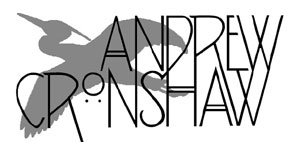
- Andrew Cronshaw website -
- Andrew Cronshaw MySpace -
- Cloud Valley Music website -
- Andrew Cronshaw website -
- Andrew Cronshaw MySpace -
- Back to Reviews Introduction page -
Written in fRoots issue 228, 2002
ATALYJA
Atalyja
Kukū SMF 007 (2001)
VERONIKA POVILIONIENE
Vai Ant Kalno
Kukū SMF 008 (2000)
Unfond farewell to the Soviet Union, then a pause for resource-gathering, and
now it seems a stream of new-roots melt-water is beginning to flow from
Lithuania, as it is from its Baltic-region neighbours.
The debut release by ten-member Lithuanian band Atalyja jumps in as a
fully-formed new integration of the old music with approaches that might loosely
be described as rock.
It’s no easy folk-rockification, though. As with the older aspects of the
traditional musics of other parts of the region of the Baltic and eastwards -
Finno-Ugrian runo-song and Latvian vocal music, for example - Atalyja’s
traditional song melodies, mainly seasonal songs and the polyphonic songs known
as sutartines, are very narrow in compass, virtually never straying outside a
repeated short sequence made from the first five notes of a diatonic minor
scale, and they often use less, frequently just four, sometimes only two. The
band has the task of enveloping these tunes, so minimal they’re almost akin to
the patterns of Western once-avant-garde systems music, in an instrumental,
arranging and production garb that communicates with a present day audience.
They do it by suspending the song, delivered variously by five singers, female
and male, in a kind of weary moderate yell (I don’t think I mean that badly)
over a bass guitar pattern, and adding in the other instruments - kankles (the
Lithuanian equivalent of Finnish kantele), bagpipes, fiddle, viola, flute,
skuduciai (unassembled panpipes), guitar, tabla and drums - in overlapping
figures or suggestions of canon. The warm, looping bass lines have a crucial
role somewhat akin to Hugues de Courson’s in early Malicorne. Indeed the grainy
instrumental textures strike parallels with those of the French band, which like
Atalyja created a modern but not jollifying or simplistically syncopating
expression for a body of traditional material.
Veronika Povilioniene’s album is very different. Unlike the young upstarts of
Atalyja, the singer whose calm face fills the booklet cover, framed nun-like by
white head-cloth, has been performing folksongs since the 1960s, when despite
the Soviets’ cultural levelling there was academic study of folksong, and the
academics sang. Veronika, studying philology at Vilnius University, knew songs
from her childhood in the “shrewish and very sonorous, rich in mushroom and
berry district” of Dzukija, and over the years she became a well-known singer.
Much of the traditional material she sings, in a fine, unaffected, even voice,
has a much wider tonal compass than that performed by Atalyja.
For about half the 22 tracks on the album, seemingly recorded between 1986 and
2000, she’s recorded in a forest, her voice accompanied only by the occasional
avian twitter. The parts of the booklet notes that are translated into
splendidly unchecked near-English describe that aspect of the recording, and
mention collaborations she has done with various musicians and composers which
seem to be represented here, but there’s no translation of Veronika’s own notes
and so neither warning nor explanation, to non-Lithuanian speakers at least, of
the collisions to come after the opening couple of unaccompanied tracks. On
track 3 sneaking in behind her are synthy sounds, which build up to a take-over by an
80s-style jazz-rock band at full squee. Then back to the forest for a couple
more solo songs, before the appearance of a jerky-honky tenor sax, with which
she intertwines a recitative narrow-compass song with bursts of fast speech;
it’s an entertaining dialogue, until towards the end the saxist wanders off into
bebop.
And so this intriguingly patched together album proceeds, punctuating
solos with items in which she’s joined variously by an acapella folk-choral
vocal group, rousing masculine choral vocals and street sounds, a waltz song
with dum-ching-ching guitar part and accordion, a set of appealingly natural
play songs with a chuckling infant, a serenely floating duet with sax, until the
final track where her still quiet solo is, for some non-obvious reason, brutally
terminated by an aggressive rock-band male chant. This is one of those records
you find yourself going back to, not only because it features a lovely singer of
interesting traditional material but also for its awakening lurches into
oddness.
© 2002 Andrew Cronshaw
You're welcome to quote from reviews on this site, but please credit the writer
and fRoots.
Links:
fRoots - The feature and
review-packed UK-based monthly world roots music magazine in which these reviews
were published, and by whose permission they're reproduced here.
It's not practical to give, and keep up to date,
current contact details and sales sources for all the artists and labels in
these reviews, but try Googling for them, and where possible buy direct from the
artists.
CDRoots.com in the USA, run by
Cliff Furnald, is a reliable and independent online retail source, with reviews,
of many of the CDs in these reviews; it's connected to his excellent online magazine
Rootsworld.com
For more reviews click on the regions below
NORDIC
BALTIC
IBERIA (& islands)
CENTRAL & EASTERN EUROPE, & CAUCASUS
OTHER EUROPEAN AMERICAS OTHER, AND WORLD IN GENERAL
- Back to Reviews Introduction page -